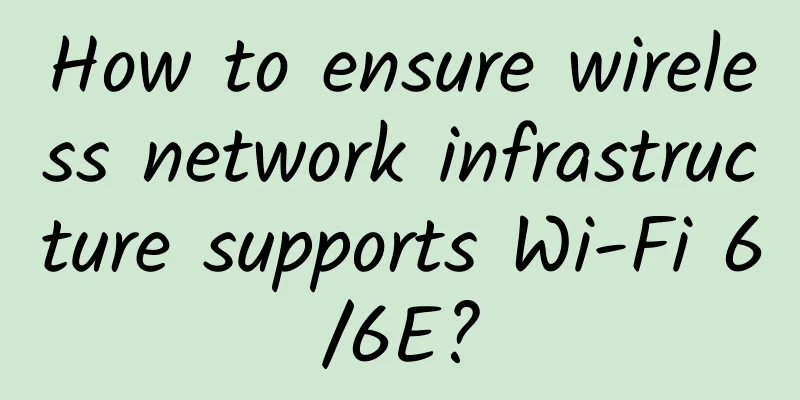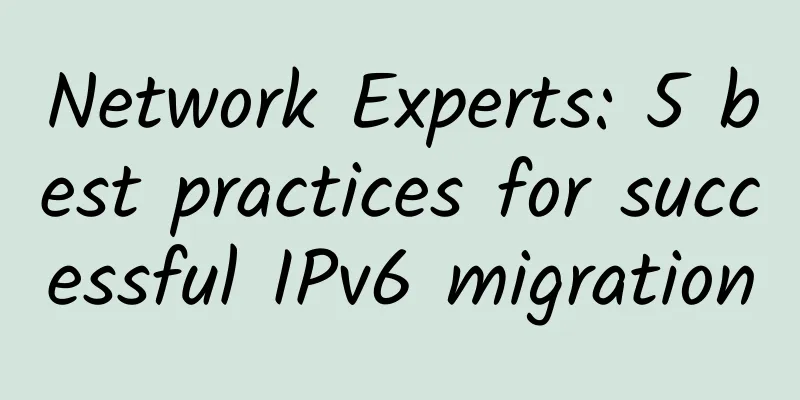How to ensure wireless network infrastructure supports Wi-Fi 6/6E?

|
As the use of wireless devices continues to soar in today's hyper-connected world, the FCC recently released 1200 MHz (1.2 GHz) of spectrum for unlicensed use in the 6 GHz band, greatly expanding the amount of bandwidth available to Wi-Fi and other unlicensed technologies. For industry and consumers, this next step in the evolution of wireless networks not only accelerates the growth of the Internet of Things (IoT), but also promises less interference and lower latency, ultimately meaning higher performance and faster speeds. The wireless coverage of the 6 GHz band is similar to that of the 5 GHz band, so leading access point (AP) vendors say that 5 GHz technology has been established without the need to further increase the number of APs, change AP locations, or re-perform wireless site surveys for environments with the 5 GHz band. But that doesn’t mean the change is without consequence. While the number and placement of APs don’t need to change, the cabling infrastructure that connects them together must be prepared to support the higher throughput capabilities of Wi-Fi 6/6E. Likewise, because industry standards now also recommend uplink capacity of at least 25 Gbps in fiber backbone infrastructure to support increasing Wi-Fi 6/6E traffic and higher speeds, it is more important than ever to follow industry standards and best practices when designing and deploying next-generation wireless network infrastructure. Wi-Fi 6/6E Infrastructure ChecklistGiven the breadth of impending wireless connectivity, wireless APs are now deployed in a wider range of controlled and uncontrolled environments and spaces. Given that they are critical network endpoints in today’s digital world, these devices must be deployed in a way that optimizes coverage while meeting unique and often critical requirements for protection, security, accessibility, code compliance, and aesthetics. So, consider the following as you take your next steps: CoverageTo optimize coverage, wireless APs, by their very nature, must be oriented to provide the best line of sight and avoid being blocked by building structures. Therefore, it is critical to deploy them at the proper location and height without being obstructed by wall panels, ceilings, joists, and other ceiling components. Harsh EnvironmentFor outdoor, near-building deployments, it is important to protect wireless APs from the elements such as rain, snow, sun, and extreme temperatures. Per FCC rules, in the 6 GHz band, only APs designed for outdoor operation may operate outdoors. SafetyProtecting wireless devices from theft, vandalism, and accidental damage is critical in open locations such as schools, hospitals, and other public places. Wireless AP enclosures in these areas should include locking mechanisms to prevent unauthorized access to the device and supporting infrastructure and comply with regulations such as the Health Insurance Portability and Accountability Act (HIPAA). Comply with regulationsSpecific types of spaces may have regulatory requirements that need to be met when deploying wireless APs. For example, hospitals and healthcare facilities need to follow an infection control risk assessment (ICRA) procedure to protect patients from any consequences of routine maintenance or major renovation and construction projects in a healthcare environment. aestheticsMany commercial buildings are designed to high architectural standards and ceilings and walls must remain aesthetically pleasing. In these cases, wireless designers must plan to meet architectural preferences while also ensuring that wireless APs remain exposed to maintain better coverage. Installation NotesIn addition to mounting wireless APs horizontally on ceilings or walls to maintain optimal coverage, the proliferation of wireless communications may require that wireless APs be installed in unique locations, such as outdoor environments and/or beneath seats in large sports stadiums. By keeping these considerations in mind, you will be prepared to address the most pressing Wi-Fi 6/6E needs and make smart, future-proof decisions as the market further evolves. |
<<: What does Wi-Fi bring to Matter’s push for home IoT?
>>: RabbitMQ communication model routing model
Recommend
Virtono: 14 new data centers added recently, 40% discount on down payment, starting from €17.9/year
Virtono recently released a 40% discount code for...
Is the time ripe for “rate experience billing” in 5G multi-dimensional billing?
July 5 During the just-concluded mobile communica...
Ethernet welcomes new growth: Experts' view on automotive Ethernet and AVB technology
Before discussing automotive Ethernet, let’s take...
Understanding TCP/IP protocol stack HTTP2.0
[[332931]] 1 Introduction Today, let's study ...
Here is everything you want to know about 5G progress and next steps
The progress of 5G has always been a key topic of...
Wi-Fi 6 certification, here are 6 issues worth paying attention to!
This article is reproduced from Leiphone.com. If ...
DesiVPS: $15/year KVM-1GB/15GB/2.5TB/Los Angeles & Netherlands Data Center
Tribe shared information about DesiVPS last year....
How 5G will change engineering design
The past decade has seen unprecedented technologi...
Forcepoint releases 2017 cybersecurity predictions
[[179053]] Forcepoint , a global cybersecurity le...
LOCVPS Hong Kong cloud traffic upgrade, 20% off high bandwidth Hong Kong VPS monthly payment starts from 29.6 yuan
LocVps recently upgraded the traffic of VPS packa...
Survey shows consumers are very dissatisfied with 5G and cellular network quality
According to reports, Waveform released a survey ...
High-quality networks build differentiated competitiveness for operators and enable business success
[Shenzhen, China, July 30, 2020] Today, Huawei he...
Edge computing is the driving force for enterprise IT transformation in the next decade
According to forecasts, the number of 5G subscrib...
Important event preview: Here is an invitation to smart education
With the release of the "Education Informati...
NVIDIA Launches 6G Research Cloud Platform to Advance Wireless Communications with AI
NVIDIA today announced a 6G research platform tha...









